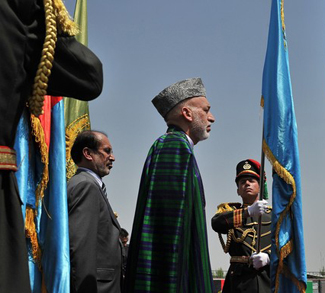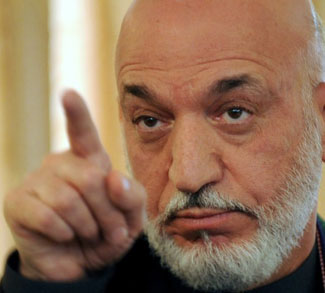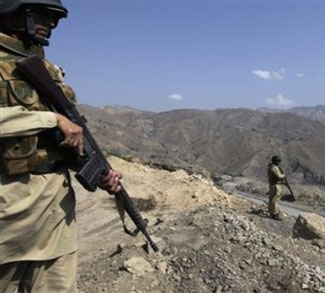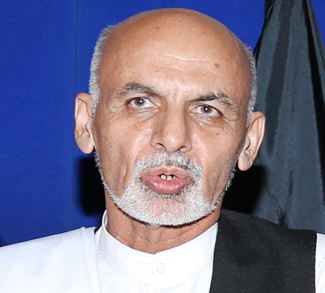Back in July, Secretary of State Hillary Clinton made it official: Afghanistan is now a Major non-NATO Ally (MNNA), a classification that all but ensures that defense and development aid will continue to flow through 2014 and beyond. Is this good policy or an exhausted administration tugging on its very own geopolitical Gordian Knot?
One must first consider the motivations underlying the Obama administration’s decision. The MNNA designation itself is largely symbolic, as it carries no legal weight in the realm of collective security. But that’s not to say that it isn’t important. Quite the contrary, it’s a label that is usually applied to countries that are viewed as crucial to US security interests. The 14 other MNNAs include Israel, Japan, the Philippines, Bahrain, and Pakistan to name a few. MNNAs also have open access to US military technology by virtue of circumventing most of the provisions of the Arms Control Export Act.
Given the obvious strategic importance of other MNNAs, it seems strange that Afghanistan would make the list. After all, Afghanistan is not an energy supply lynchpin like Bahrain or a potentially critical staging ground for US troop deployments like South Korea. Rather, Afghanistan’s value as an MNNA derives from a more complex equation.
First and foremost, Afghanistan is strategically important, though less so than most other MNNAs because while it is not considered an asset per se, it could fast turn into a liability if it were to revert into an Al Qaeda sanctuary. We can safely assume that the complete indifference that characterized US policy towards Afghanistan would have carried on in perpetuity had the events of 9/11 not shaken up US strategic priorities. And though the removal of international terrorist sanctuaries worldwide is certainly an important foreign policyobjective, it warrants consideration that several new sanctuaries have popped up since the onset ofNATO operations in Afghanistan, notably in Somalia, Yemen, and the tribal regions of Pakistan. Thus, while there are still people who can argue that international terrorism has at best been alleviated and at worst transferred elsewhere by NATO’s presence in Afghanistan, very few can credibly claim that the problem has been ‘solved.’
Or to put it differently: Afghanistan may be strategically important, but so is Yemen, Kenya, Mali, Uganda, Iraq, etc.
More importantly given present circumstances, Afghanistan is politically important- and not just to stakeholders in the United States. The fate of the government in Kabul impacts two interconnected questions that could make or break political fortunes throughout the Western world: whether the money and lives spent in Afghanistan were ‘worth it’ and if so, whether the NATO alliance could credibly pull off a repeat performance if future circumstances demanded it.
All evidence suggests that the MNNA designation was motivated more by these political considerations than any strategic rationale. Secretary Clinton herself had a ‘doth protest too much’ moment during the press conference when she went out of her way to stress that the Obama administration is, “not even imagining abandoning Afghanistan.” This seems to be the preferred message to accompany the MNNA announcement, a renewed promise for an Afghan administration that is rumored to be losing faith in its American benefactor. The MNNA distinction also can’t hurt President Obama’s re-election chances, as a headline that reads ‘America’s newest strategic ally’ tends to poll higher than ‘Afghan MP blown up attending his daughter’s wedding.’
Not surprisingly, the bestowal of such a designation on the basis of short term political expediency could very well prove to be a mistake. As World Politics Review’s Nikolas Gvosdev points out in his latest column, most major US allies share some kind of long term political or cultural bond with the United States, allowing for a relationship that can supersede the wax and wane of domestic politics. In the case of Afghanistan however, it’s not hard to see a day when the Karzai administration itself presides over a controlled break with the West in order to repair its nationalist credentials and foster reconciliation, let alone the massive breach that would result if the Taliban were to ever retake Kabul.
But it’s not just political embarrassment that’s being risked in granting Afghanistan MNNA status. The designation might come at the cost of jeopardizing direct US security interests in Afghanistan (preventing another Al Qaeda sanctuary), as well as incurring indirect strategic blowback throughout the region.
Corruption is still rife in Afghanistan, so much so that Transparency International’s Hugette Labelle estimates that as much as $1bn of the $8bn donated so far has simply vanished into pockets unknown. And that’s not even the final number, because more money is on the way. Another $16bn of support was pledged at an international donor conference in Tokyo in early July ($2bn of which will likely disappear if we crudely extrapolate using Labelle’s formula.) Though conference participants stressed that their donations will be accompanied by strict monitoring procedures to ensure that the money gets to where it needs to be, it’s hard to foresee this round being radically different from previous ones. It’s not like Afghan corruption is an issue that has popped up in the last year or two.
The corruption problem is not simply a matter of donors being taken for a ride. Persistent graft strikes at the very core of the Karzai regime’s legitimacy and could very well expedite the Taliban’s return to power. One of the primary sources of mass appeal for the Taliban’s is their anti-corruption message. In the early 90s, they rode it all the way to Kabul. If the situation on the ground doesn’t change, it won’t be long before they can try again.
Past efforts to rectify Afghan corruption have followed a predictable track: there is talk of more transparency and accountability, Kabul is issued a warning, the Karzai government vows to do something about it, and ultimately nothing comes of it because NATO stakeholders are too scared to push hard and risk destabilizing the government that they’re so politically invested in. The Obama administration’s decision to grant MNNA status fits somewhere into this proud tradition. It was not a reward for good behavior, and by virtue of being extended in such a cheap and cynical way, it deprived NATO of a future tool should it ever decide to actually hold the Afghan government to a higher standard.
And then there’s the question of those arms sales, ever-growing and newly streamlined thanks to Afghanistan’s ascension to the MNNA club. With the possible exception of Pakistan, there’s no other MNNA that carries such a clear risk of advanced American weaponry falling into enemy hands. The hazard follows a simple formula: the more US arms flow into Afghanistan, the greater the potential strategic fallout if there ever comes a time that they’re pointing the other way. This isn’t a consideration that’s reserved for some hypothetical openly hostile post-Karzai administration. The Afghan National Security Force (ANSF) of right now is awash with Taliban sympathizers. There have been 42 attacks on US and NATO troops by ANSF forces, resulting in 70 deaths since 2007 alone. It’s not too much of a stretch to assume that there are untold others who pass up fratricide and stick to stealing weapons and other supplies.
Since 2001, the NATO campaign in Afghanistan has been a clinic on the ascendance of short term political expediency over long term strategic vision, and the country’s designation as MNNA is much of the same. Of the thousands of briefings, expert opinions, and policy prescriptions professing to offer an Afghan solution, the US and NATO might want to get back to basics and try: a stitch in time saves nine.




